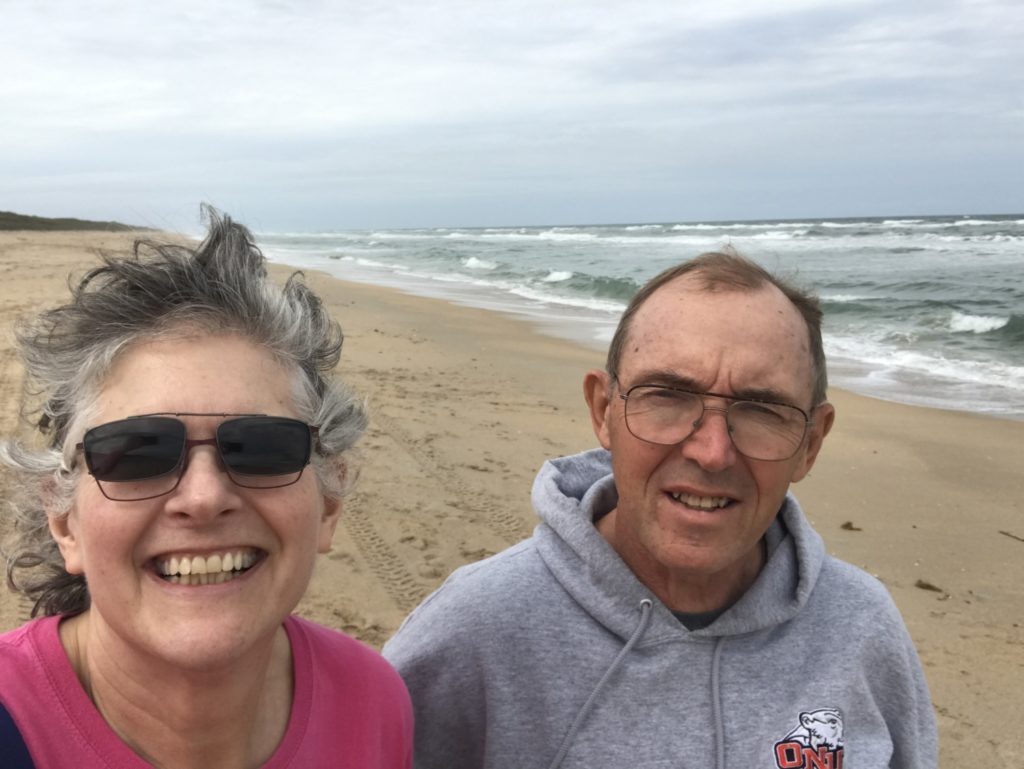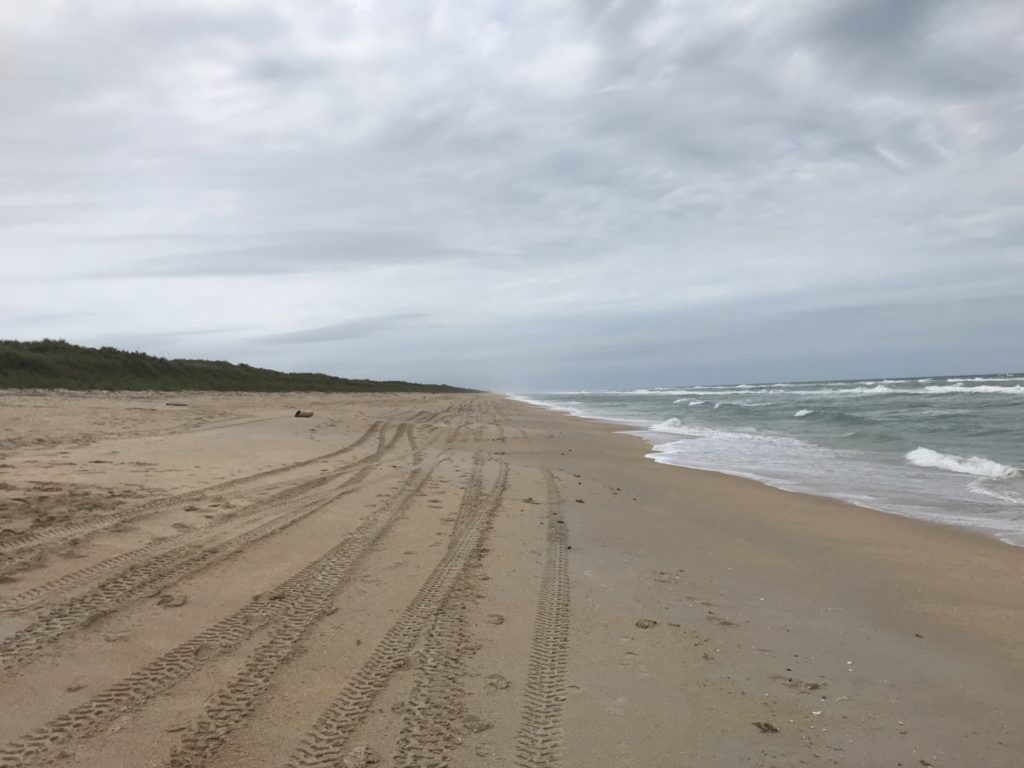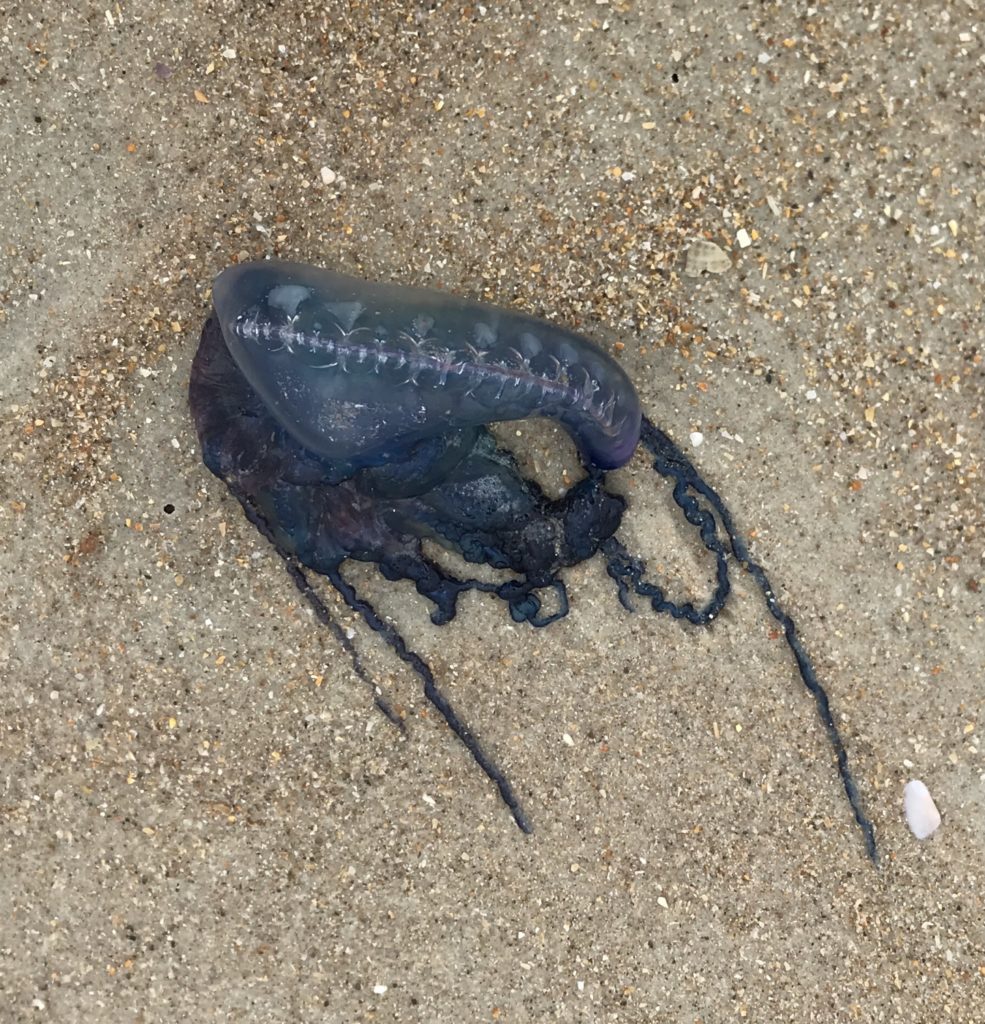Tom and I recently took a day trip south to Canaveral National Seashore in Florida, about a three hour drive from St. Simons Island. We had planned to go there several times before but something always interfered. This time we picked a day and stuck with it, even though it ended up being rainy and cool.
Canaveral National Seashore is the largest undeveloped stretch of coastline in Florida at 28 miles. It is made up of three beaches and a lagoon. The three beaches are on a thin strip of land between the ocean and Mosquito Lagoon. We headed to the north beach, Apollo Beach, which was the easiest to reach from our location. Canaveral National Seashore charges an entrance fee, which was $20 per vehicle when we went. We got in free because of Tom’s Senior National Park Pass.
Our first stop was at the Apollo Visitor Center where I got my stamp while Tom attempted to talk to the ranger. I say attempted, because, as soon as she delivered her spiel, she didn’t want to talk to us anymore. When we asked if there was a movie, she said “yes.” When we asked when it played, she said “when I push the button.” Then she walked away. We got more information from the Eastern National Bookstore employee.
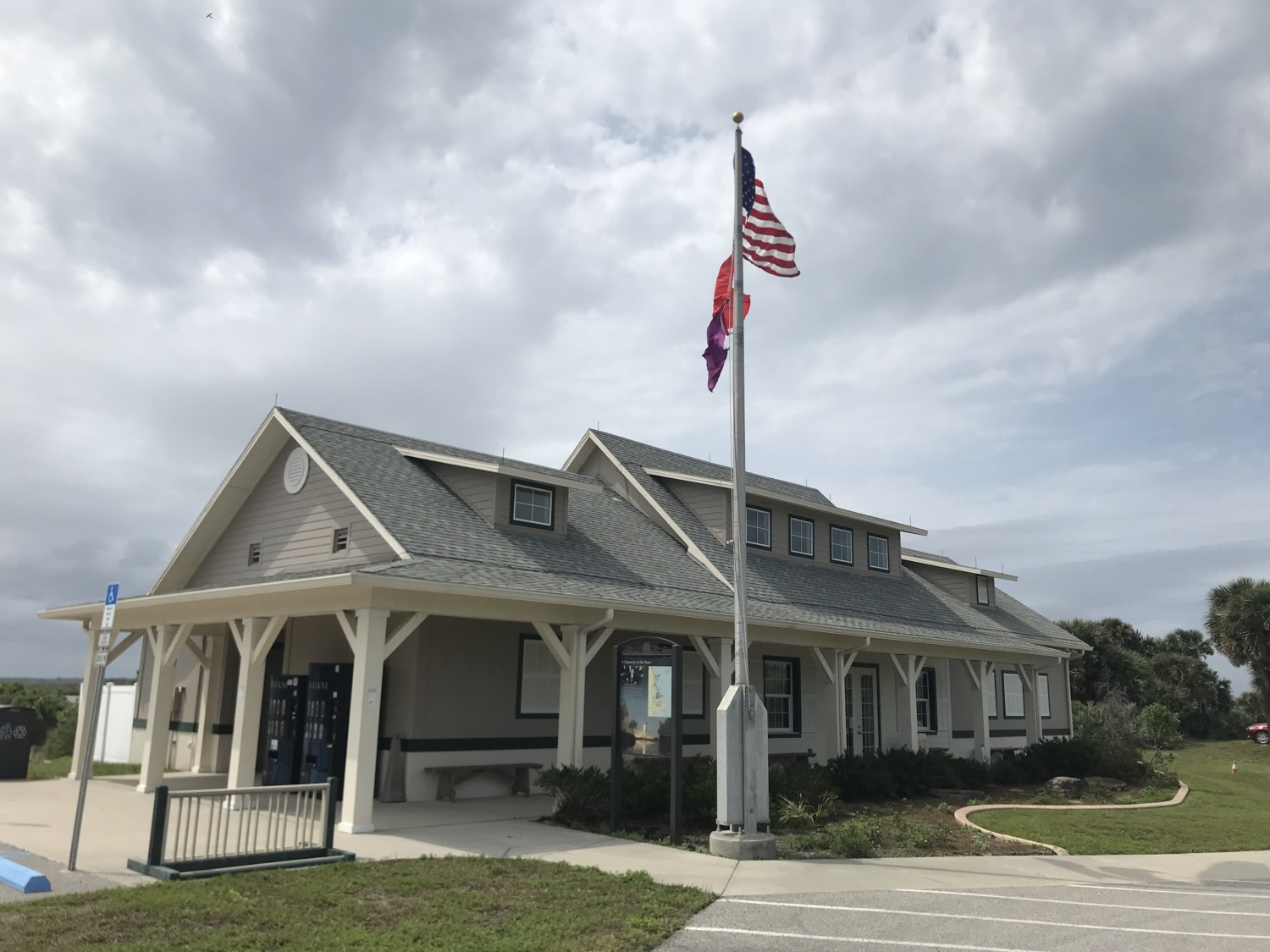
We checked out the gift shop and a small display on the wildlife in the lagoon. When the movie had finished, we went in and watched. The movie did a good job of describing the interaction of people over time with the ocean and lagoon. The Timucuan people lived in the area for centuries, fishing and creating huge shell middens. Turtle Mound on the lagoon side of Apollo Beach is about 40 feet high and is one of those shell middens.
Americans tried settling the in the area around 1890 but it was a hard place to make a living. The small town of Eldora was the only settlement and it survived for about 20 years. A few people continued to live in the houses of Eldora until the last person died in 2000. The town had a thriving orange grove and fishery but was abandoned after a severe cold snap destroyed the oranges. The town never had more than 100 residents.
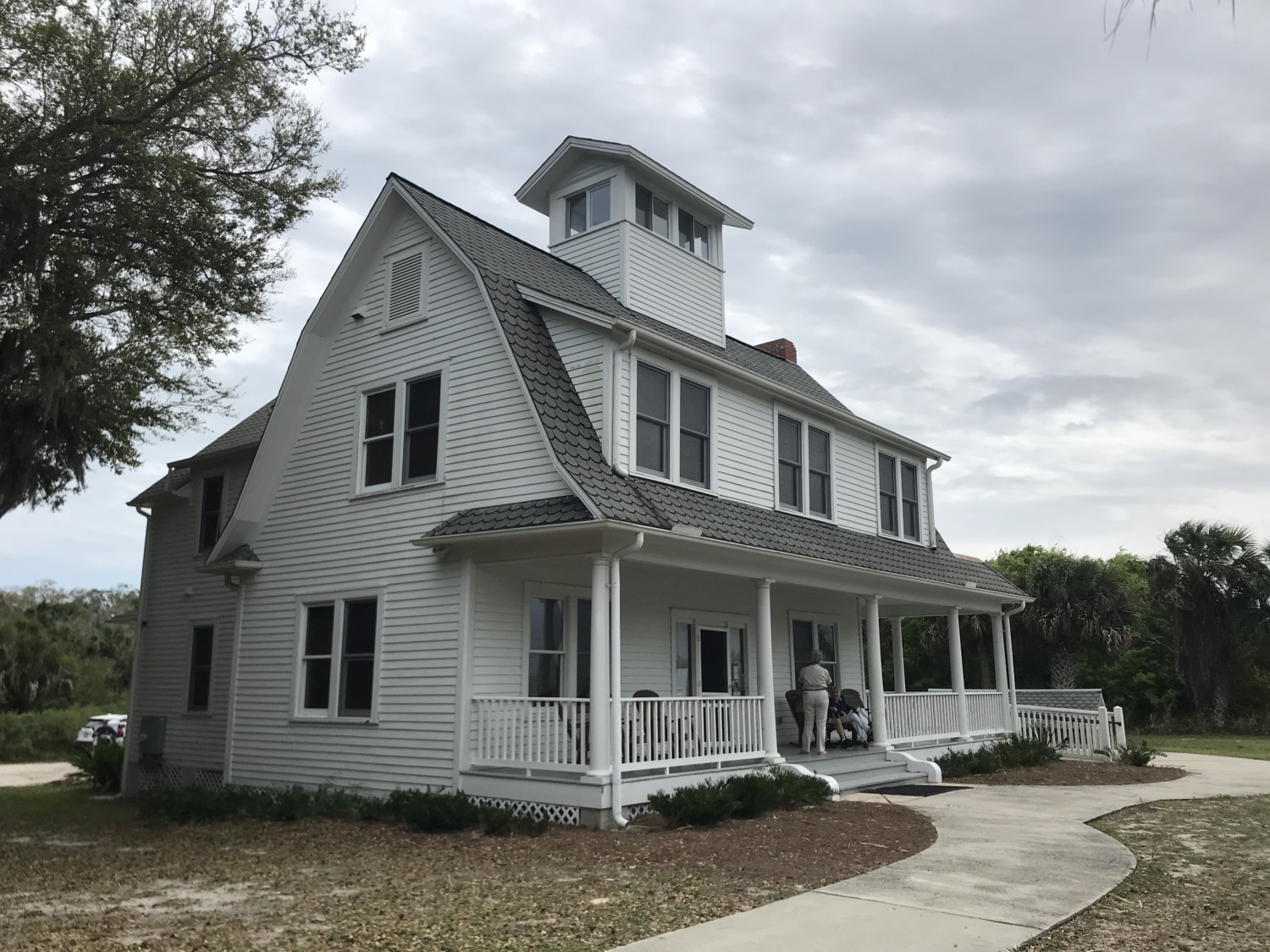
After watching the movie, Tom and I drove to the remaining Eldora building, which is now a museum. We saw a short movie about Eldora and looked at the displays in the building. After walking around Eldora and checking out the view of the lagoon, we parked in Area #3 and went to the beach. We walked across a boardwalk to the narrow strip of beach. The sand was very coarse – not fine like the sand on St. Simons. The beach slopes down quickly, which means that the shells don’t get as beat up before landing on the beach, hence the coarser sand.
Purple and orange flags were flying at the beach entrance. Tom looked up what those meant. The red flag means dangerous water conditions such as strong currents and high surf. The purple flag means dangerous marine life. As we walked on the beach, we spotted the dangerous marine life. There were Portuguese Man o’ Wars dotting the beach, which meant they were also in the water.
The Portuguese Man o’ War is a siphonophore, related to the jellyfish. They have long tentacles that can be up to 100 feet long. The tentacles contain stinging nematocysts, microscopic capsules loaded with coiled, barbed tubes that deliver venom capable of paralyzing and killing small fish and crustaceans. While the man o’ war’s sting is rarely deadly to people, it packs a painful punch and causes welts on exposed skin. Even if they are dead on the beach, they can still give you a painful sting weeks after dying, so Tom and I were careful to stay away from them.
There was one family on the beach during the time we were there. Looking north and south we couldn’t see any other people. I’m sure in the summer the beach is very busy, but we certainly saw the wild and natural beauty of it while we were there.
When the Visitors Center ranger gave us her spiel, she told us about parking in the beach access parking lots and mentioned (in passing) that the nude beach was south of parking access #5. Tom and I thought that deserved more than a passing mention, but I’m sure she gets tired of comments and jokes about the nude beach. Tom and I were surprised that the National Park Service has nude beaches!
The southern part of Canaveral National Seashore, Playalinda Beach, is accessible only through Titusville. You can’t get there from Apollo Beach. The road at Apollo Beach is a dead end. The road at Playalinda Beach is also a dead end, and the area north of parking access #13 is another nude beach. Playalinda Beach offers the best viewing for launches from the Kennedy Space Center. In between those two dead end roads is 13 miles of wilderness beach known as Klondike Beach. This is considered backcountry and requires a permit.
Mosquito Lagoon is an an estuary of national significance and an outstanding Florida water-way. It is one of the most diverse and productive estuaries in North America. There are manatee viewing platforms in the Canaveral National Seashore, but there are also boats racing up and down the intracoastal waterway of the lagoon. I can understand why the manatees like to stay in the shallower waters away from the docks.
Although Tom and I enjoyed our time at Canaveral National Seashore, it wasn’t much different than a lot of the other southern barrier islands. But, if you want to get away from crowds and development, Canaveral National Seashore is a good place to travel.


